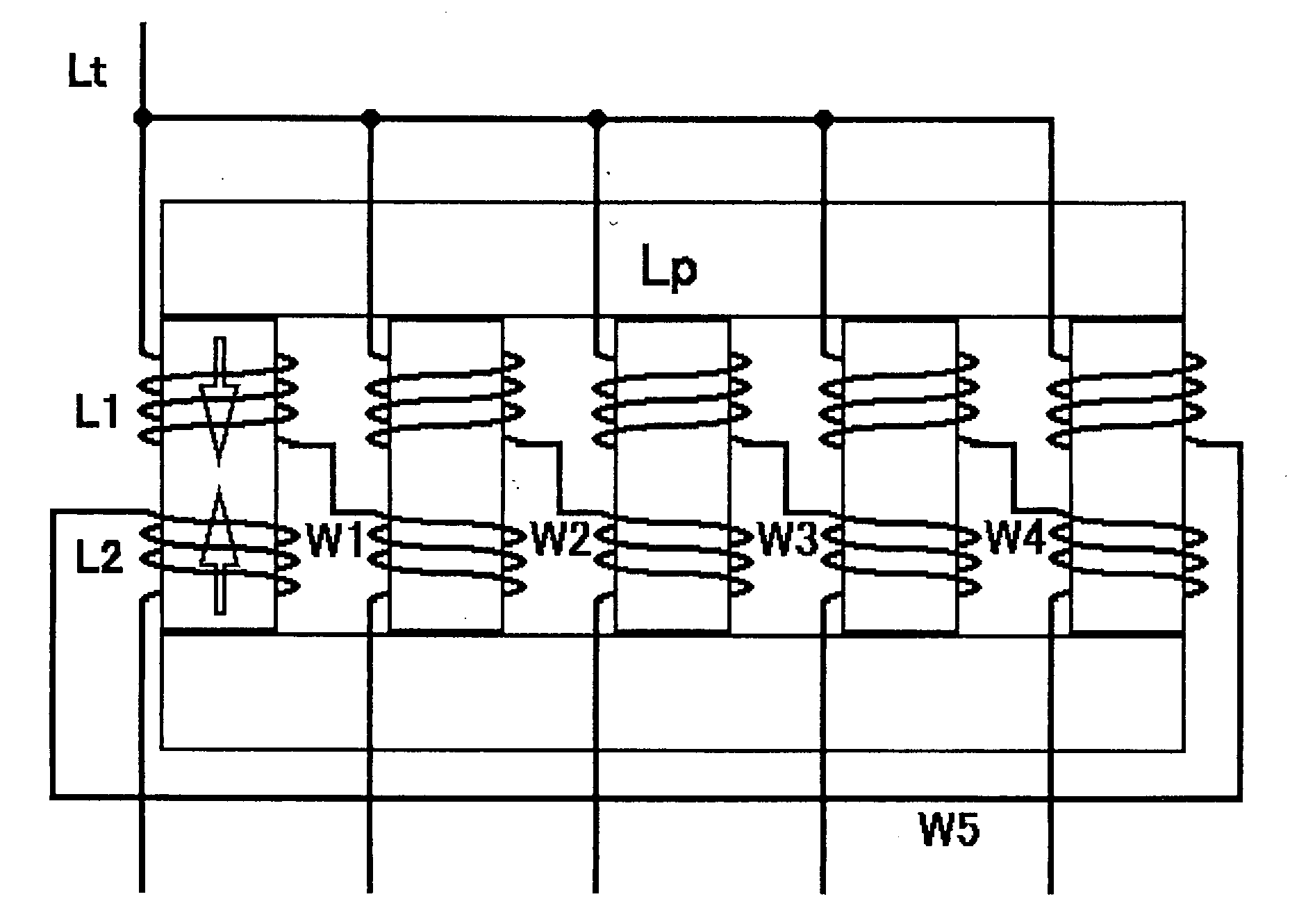Module for parallel lighting and balancer coil for discharge lamp
a technology of balancer coil and parallel lighting, which is applied in the direction of electric variable regulation, process and machine control, instruments, etc., can solve the problems of unstable effects of balancer coil, inability to realize the small and thin form of balancer coil, and uncertain practical feasibility of cold-cathode florescent lamp use, etc., to increase the self-resonance frequency of each coil, reduce coupling coefficient, and increase leakage inductance
- Summary
- Abstract
- Description
- Claims
- Application Information
AI Technical Summary
Benefits of technology
Problems solved by technology
Method used
Image
Examples
Embodiment Construction
[0104]FIG. 1 shows an embodiment of the present invention, wherein a balancer coil for cold-cathode florescent lamps is designed to make self-resonance frequency of each coil higher by applying section winding to each coil of the balancer coil, as an alternative method for achieving FIG. 21 in the specification of Japanese Patent Application No. 2004-3740 (U.S. Patent Application No. 2004-155596).
[0105] In one embodiment shown in FIG. 1, each coil of the balancer coil has three sections. As a result, when mutual inductance is 600 mH, self-resonance frequency can be 120 kHz. In this case, coupling coefficient does not particularly have to be high, and it is only necessary to secure a required mutual inductance. The balancer coil of this embodiment, therefore, is not limited to a generally rectangular parallelepiped as in the prior art, and can be flat or slim.
[0106] Section structure increases the breakdown voltage of the balancer coil in this embodiment, and this embodiment is app...
PUM
 Login to View More
Login to View More Abstract
Description
Claims
Application Information
 Login to View More
Login to View More - R&D
- Intellectual Property
- Life Sciences
- Materials
- Tech Scout
- Unparalleled Data Quality
- Higher Quality Content
- 60% Fewer Hallucinations
Browse by: Latest US Patents, China's latest patents, Technical Efficacy Thesaurus, Application Domain, Technology Topic, Popular Technical Reports.
© 2025 PatSnap. All rights reserved.Legal|Privacy policy|Modern Slavery Act Transparency Statement|Sitemap|About US| Contact US: help@patsnap.com



